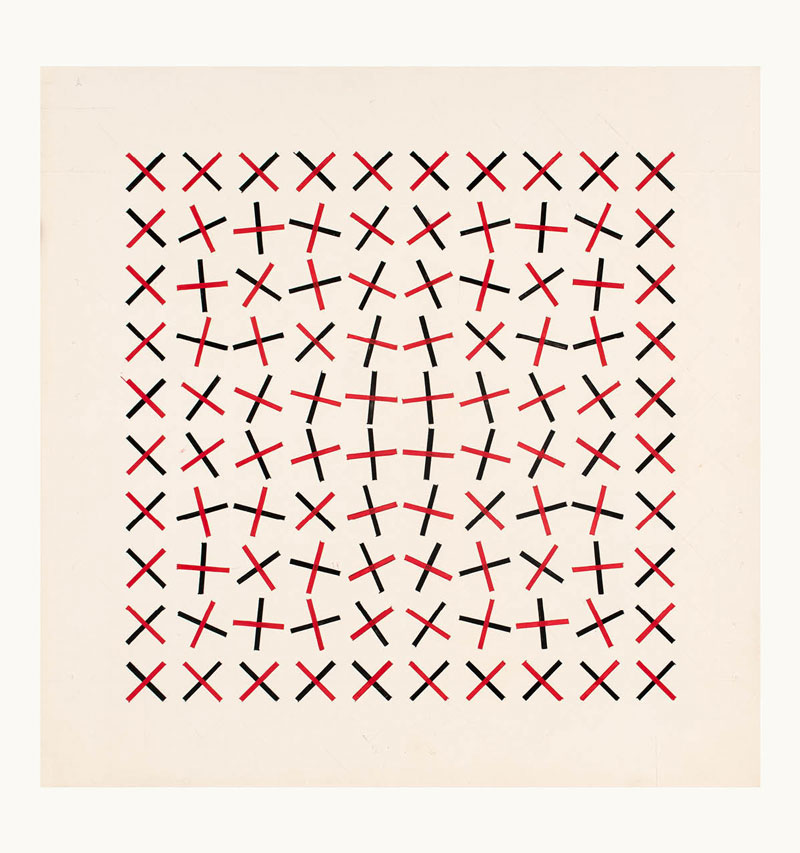ART CITIES:N.York-Julio Le Parc
 During the course of six decades, Julio Le Parc has consistently sought to redefine the very nature of the art experience, precipitating what he calls “disturbances in the artistic system”. In so doing, he has played with the viewer’s sensory experiences and given spectators an active role. With fellow members of the Groupe de Recherche d’Art Visuel (GRAV)*, Le Parc generated direct encounters with the public, while undermining what they considered the artificial constraints of institutional frameworks.
During the course of six decades, Julio Le Parc has consistently sought to redefine the very nature of the art experience, precipitating what he calls “disturbances in the artistic system”. In so doing, he has played with the viewer’s sensory experiences and given spectators an active role. With fellow members of the Groupe de Recherche d’Art Visuel (GRAV)*, Le Parc generated direct encounters with the public, while undermining what they considered the artificial constraints of institutional frameworks.
By Dimitris Lempesis
Photo: The Met Archive
The exhibition “Julio Le Parc 1959”, celebrates the artist’s extraordinary gift to The Met of 24 works and also marks the occasion of the artist’s 90th birthday. Featuring over 50 works, the exhibition presents a substantial, never-before-seen selection of gouaches from one of the most prolific and transformative years in the artist’s career. Le Parc’s artistic production has evolved from two-dimensional geometric studies, through small light boxes to room-size installations, immersive environments, and public interventions on the streets. Nevertheless, this diverse body of work shares a central destabilizing function: provoking the individual’s interaction with his or her environment while at the same time demanding a recognition of that engagement. Born in 1928 in Mendoza, Argentina, Julio Le Parc attended the Escuela de Bellas Artes in Buenos Aires in 1943. Le Parc rapidly became engaged with the flourishing avant-garde scene and with leftist activist groups. In reaction to the repressive dictatorship of Juan Perón, the artist dropped out of art school returning only after the dictator’s fall in 1955. Upon his return, Le Parc took a leadership role as an artist-advocate joining the university students’ organization Federación Universitaria Argentina, a major force of militant government opposition. Victor Vasarely’s 1958 exhibition in Buenos Aries became an important catalyst for Le Parc’s departure for Paris that year. Awarded a scholarship to study in Paris, Le Parc pursued collaborative work with fellow artist friends of Vasarely and co-founded the Groupe de Recherche d’Art Visuel (GRAV) in 1960. While Le Parc’s early geometric paintings were first informed by the Constructivist tradition of Arte-Concreto Invención in Buenos Aires, works produced soon after his arrival in Paris also reflect a growing interest in the work of Mondrian and Vasarely. By early 1960, Le Parc began incorporating movement and light into his research. Interested in the possibilities of movement, and the participation of the viewer, he developed his signature kinetic sculptures and light environments, which would ultimately bring him international recognition as a leading exponent of Kinetic Art. Representing Argentina at the 1966 Venice Biennale, Le Parc won the Grand International Prize for Painting as an individual artist. Although the group dissolved in 1968, Le Parc continued to work simultaneously as an individual artist and as part of international collectives, particularly those involved in politically denouncing totalitarian regimes. Le Parc’s participation in the May 1968 Paris uprising and union rallies led to his expulsion from France for a period of a year. Upon his return to Paris, Le Parc became an important conduit between activist Latin American artists and the Paris art scene, most specifically through the Paris publication ROBHO, for which he covered the events of the artist collaborative Tucumán Arde in Argentina.
* The GRAV artists, Julio Le Parc, Horacio Garcia Rossi, Francisco Sobrino, François Morellet, Joël Stein and Jean-Pierre Vasarely (known as Yvaral), were members of a larger group known as the Centre de Recherche d’Art Visuel before separating as GRAV in 1960.
Info: Curator: Iria Candela, The Metropolitan Museum of Art, Met Breuer, 945 Madison Avenue, New York, Duration: 4/12/18-24/2/19, Days & Hours: Tue-Thu & Sun 10:00-17:30, Fri-Sat 10:00-21:00, www.metmuseum.org


